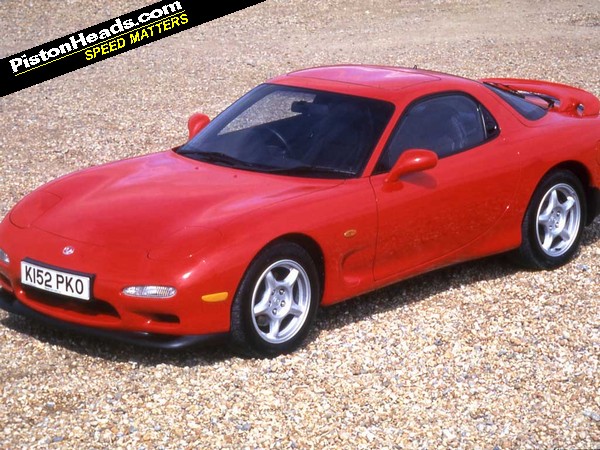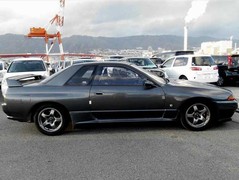Turning Japanese: PH Blog
A drive in an RX-7 has got Dan all wistful about the golden age of Japanese performance cars

What is it about Japanese cars of this period that makes them so beguiling? I’ve already done a £100K garage and there’s a long backlog of PHer contributions waiting to go live so it’s not fair I abuse my position to create another one on this theme. But the dream of a collection of 90s Japanese classics would, I think, be an excellent way of spending a hundred grand, virtual or real.
As part of a generation of car nuts who gained as much of their four-wheeled education through Gran Turismo as car mags it’s perhaps not surprising Japanese cars figure so highly on my radar. Certainly games helped raise awareness but having ‘graduated’ into driving the real thing my love of them has only strengthened.
What is it then? One of the things I love about this period in Japanese performance cars is the sheer creativity of the engineers and, seemingly, the enthusiasm of their bosses to indulge them and nurture their talents. Culturally these cars were built to very different norms than European or American cars and that’s what makes them stand out. Here cars are inexorably linked to legacies of class and status – given that many of the early pioneers, especially the motorsport enthusiasts, were drawn from the upper classes and aristocracy it’s unsurprising notions of hierarchy remain deeply seated in European car culture. Meanwhile in America it’s easy to generalise that a more simplistic obsession with power and excess are the primary motivating factors. Both cultures have created many wonderful cars but there’s a modesty and humility about the way 90s Japanese performance cars were built that I just love.
Yes, hierarchy and exclusivity were still there, with ever more esoteric and exclusive special editions to appeal to the true aficionados. But in a different frame of reference, dictated by legislation that made the horsepower and vmax arms races seen in Europe and America seem a little vulgar. With strict limits to horsepower and top speed – 280hp and 180km/h respectively – the engineers had to look at other ways to make cars exciting, each coming up with their own responses. GT-Rs and others were designed to cope with two or three times the legislated power cap and it was left to the owner and the aftermarket to unlock the potential. Honda instead went for crazy specific outputs from high revving normally aspirated engines and anally retentive weight saving like titanium gearknobs. Then there were the rally boys, exploiting four-wheel drive traction and turbocharging to make up for on-paper power deficits. Amid this diversity constants like tactile contact points with the inevitable Nardi or Momo wheel and fast-shifting, close ratio manual boxes, well-placed pedals and compact dimensions all add up to cars that work as well on British roads as they did on the Japanese ones they were designed for. Given the growing disparity between modern fast cars’ abilities and the chances to enjoy them on road or track maybe there’s something we could learn from this.
Anyway. I’m getting a bit philosophical here. Back to the cars. The RX-7 I’m to drive later is a perfect example of what I’m on about; it’s small, it’s technically eccentric and interesting with its sequential turbos and Wankel engine and as time passes the good ones are becoming ever more rare and sought after. The tuning culture that’s part and parcel of the Japanese performance world is, in this case, both a blessing and curse. Tweaking and personalising the car to your taste is a fundamental part of the game. And yet hypocritically we all prize the treasured original, unmolested car over and above the one that’s been modded.
So if/when my financial ship comes in I’m jumping aboard and immediately pointing out east to try and scoop up my dream fleet of 90s JDM specials before they all disappear for good. On the shopping list there’d have to be a Skyline of some sort – an R32 like this one I think – and an NSX Type R. Indeed, there’d be a few Hondas on there, including an EK9 Civic Type R, an Integra and maybe even a Beat. I’d have to have an Impreza – an early stripped back Type RA I think – and of course an RX-7. A Eunos Roadster too? Well, already got one of them. You’ve got to start somewhere after all...
At which point I open the floor and invite you to share your favourites of the genre too. Over to you!
Dan
Gassing Station | General Gassing | Top of Page | What's New | My Stuff






